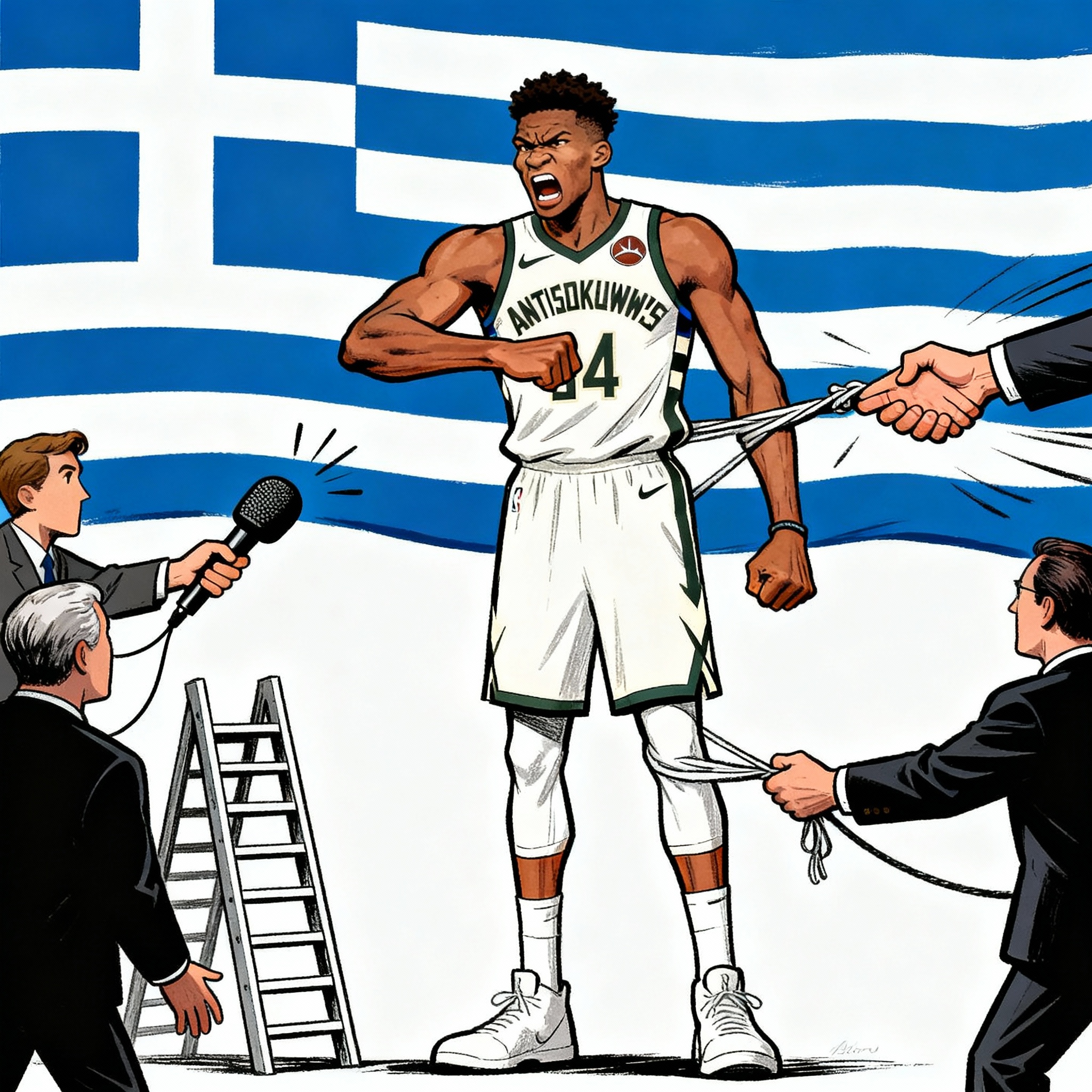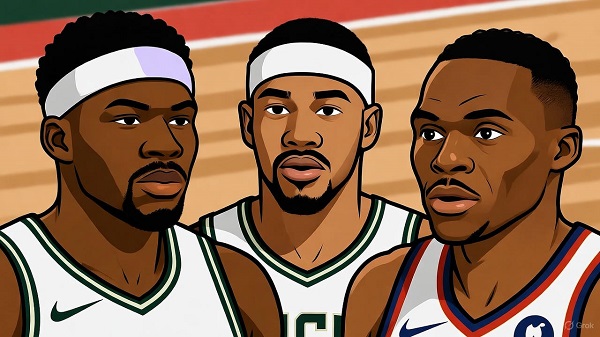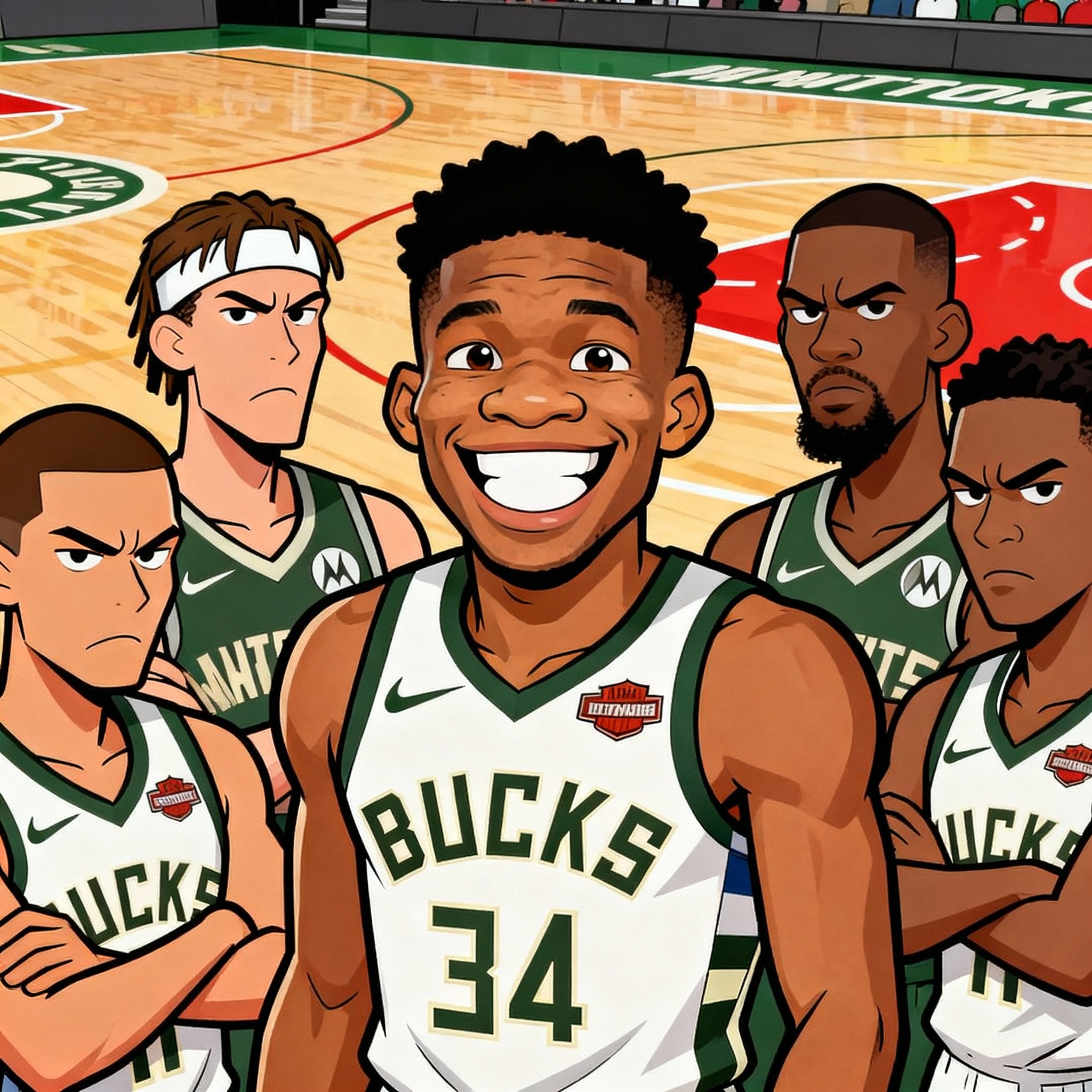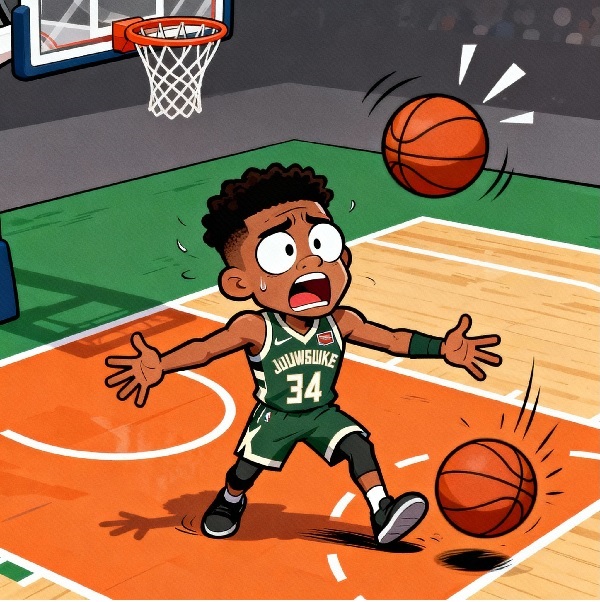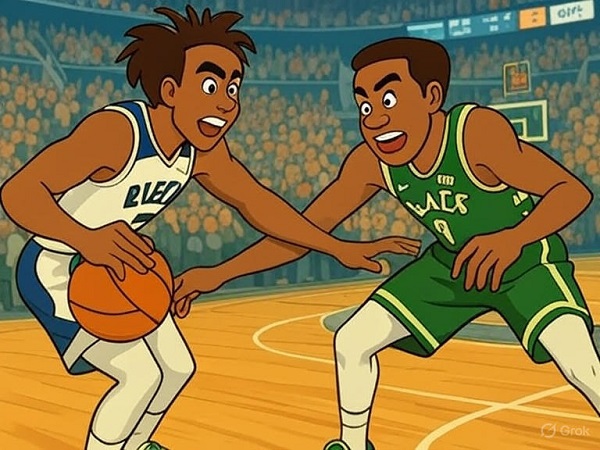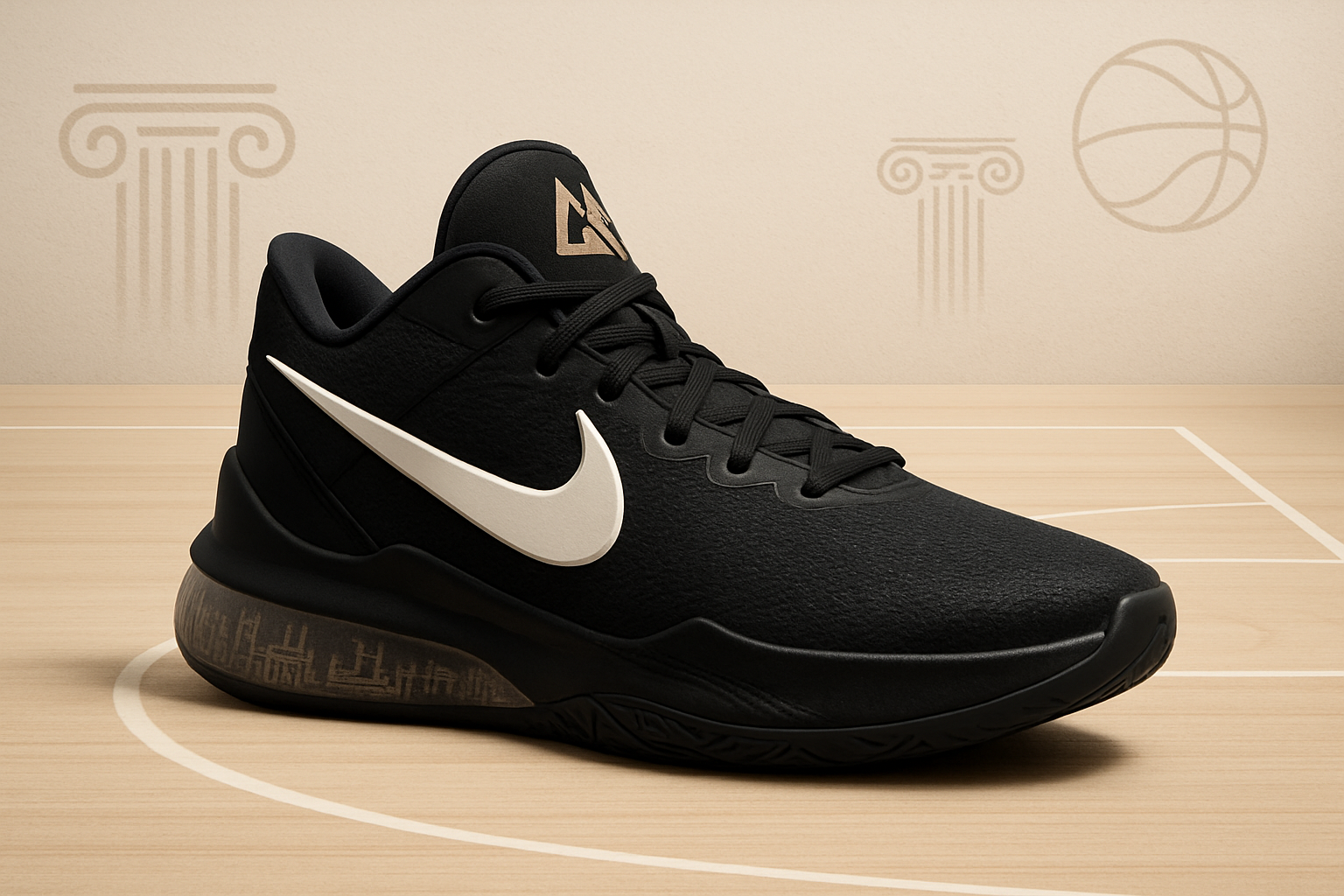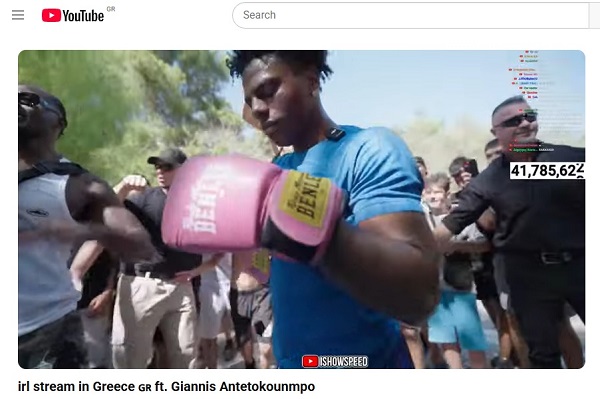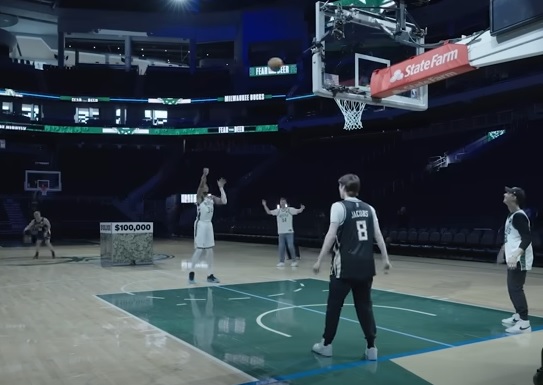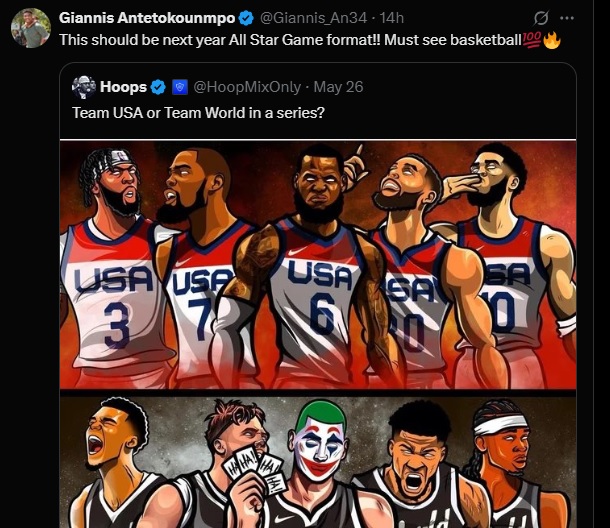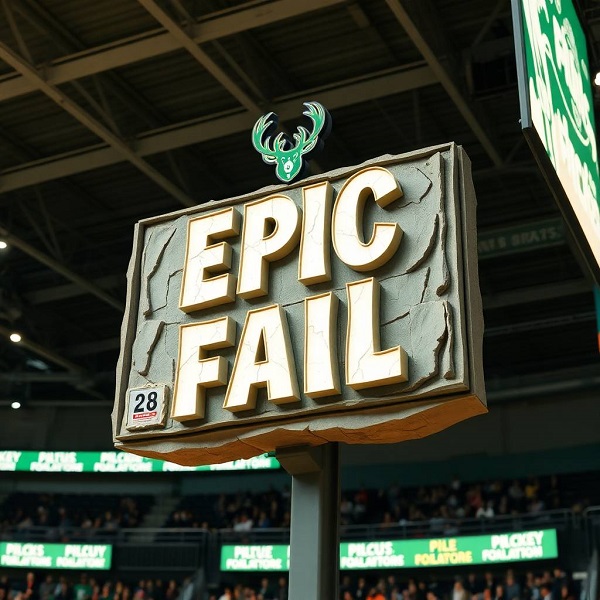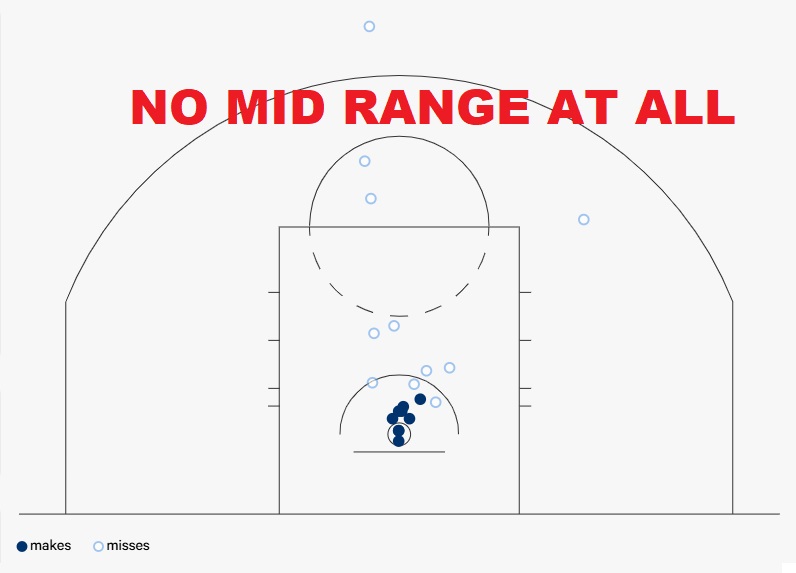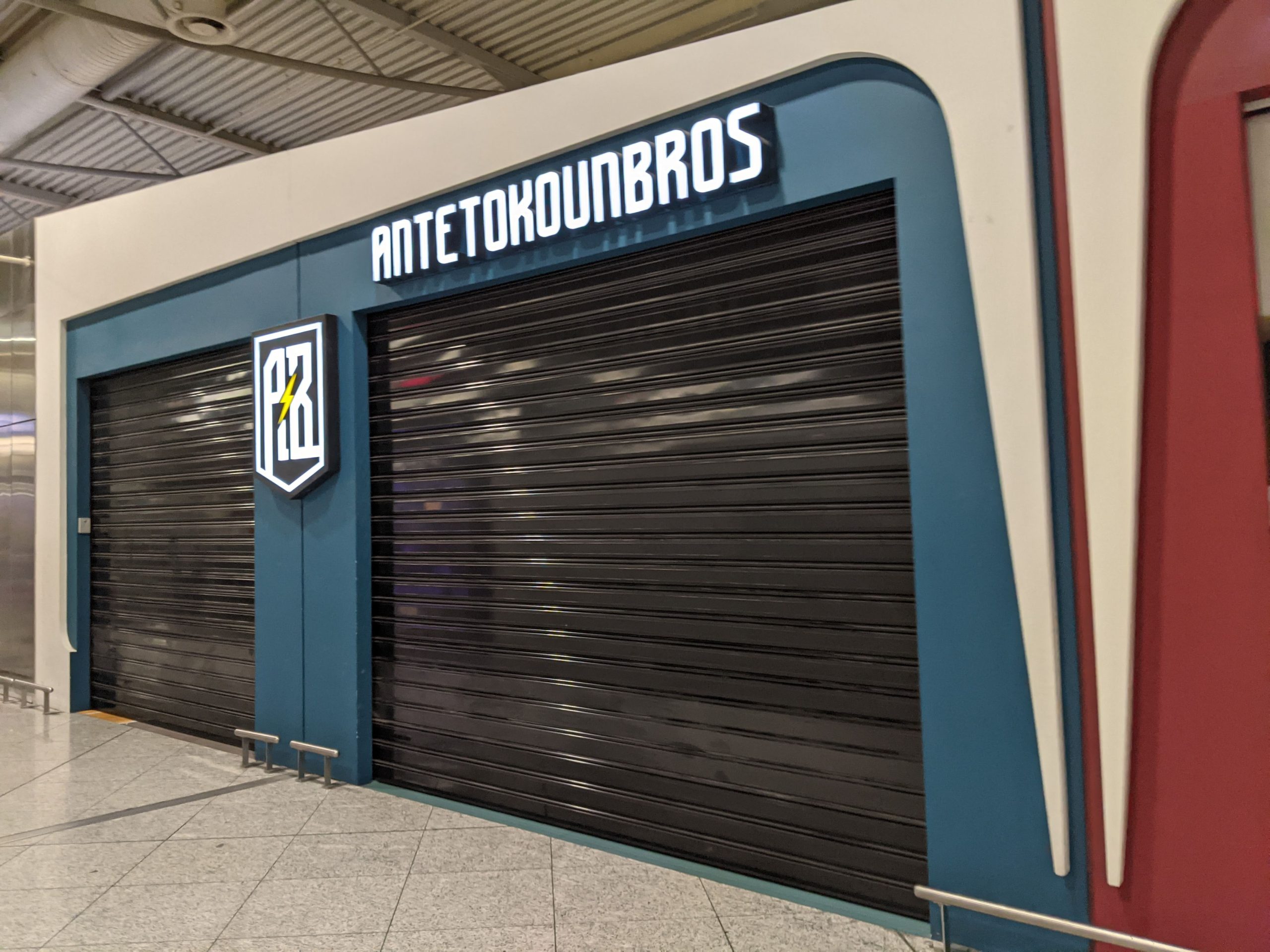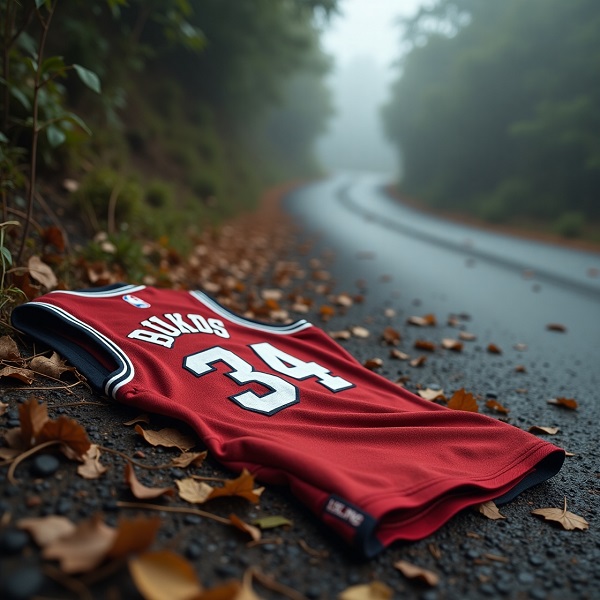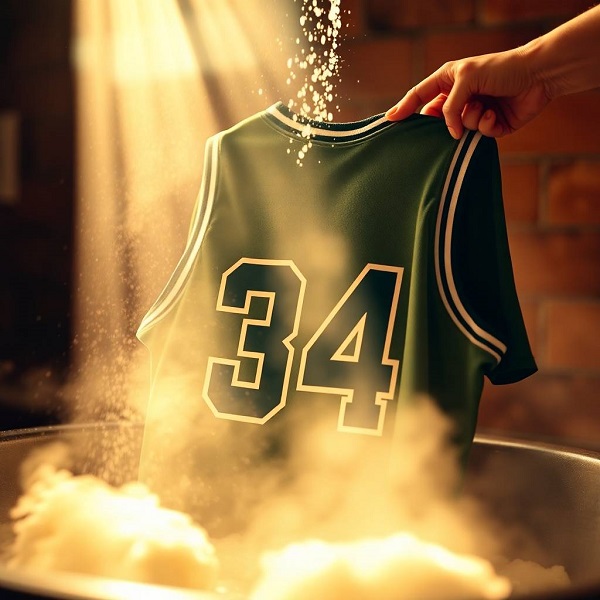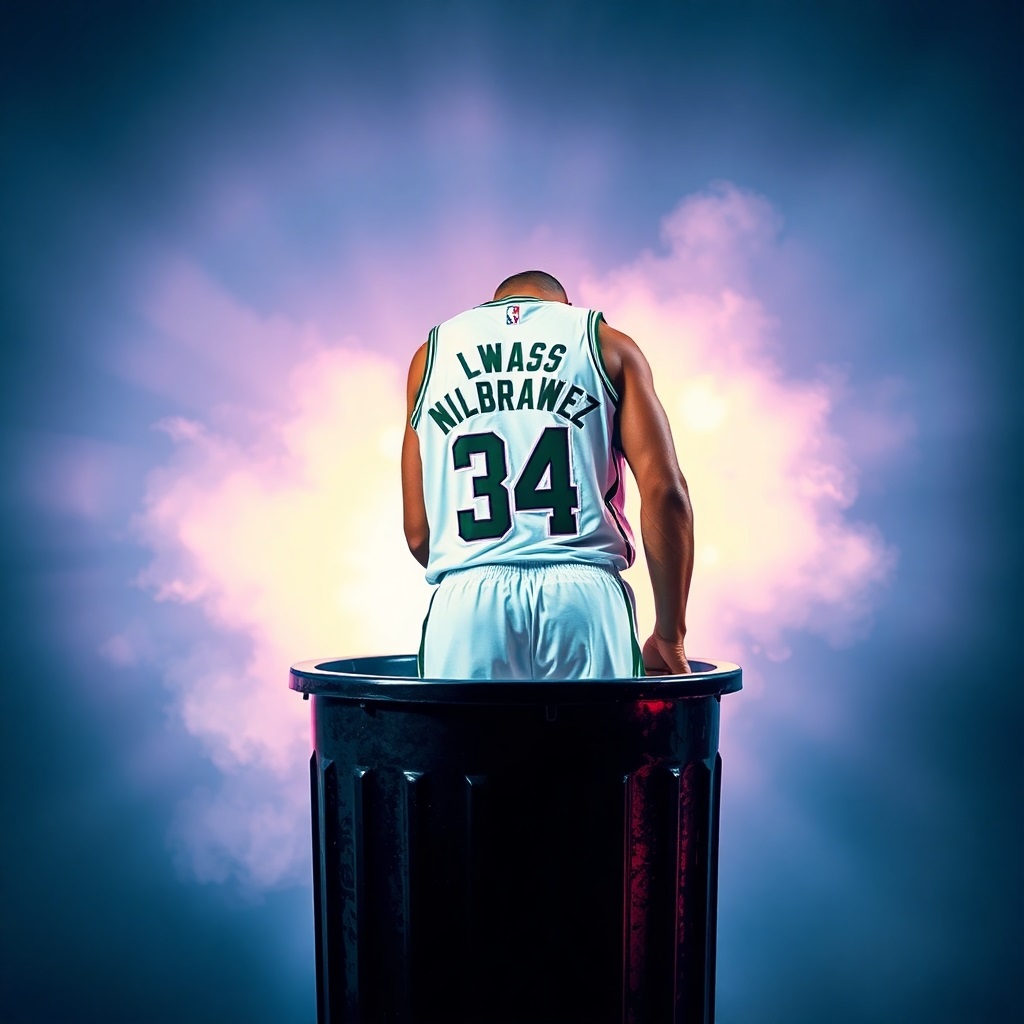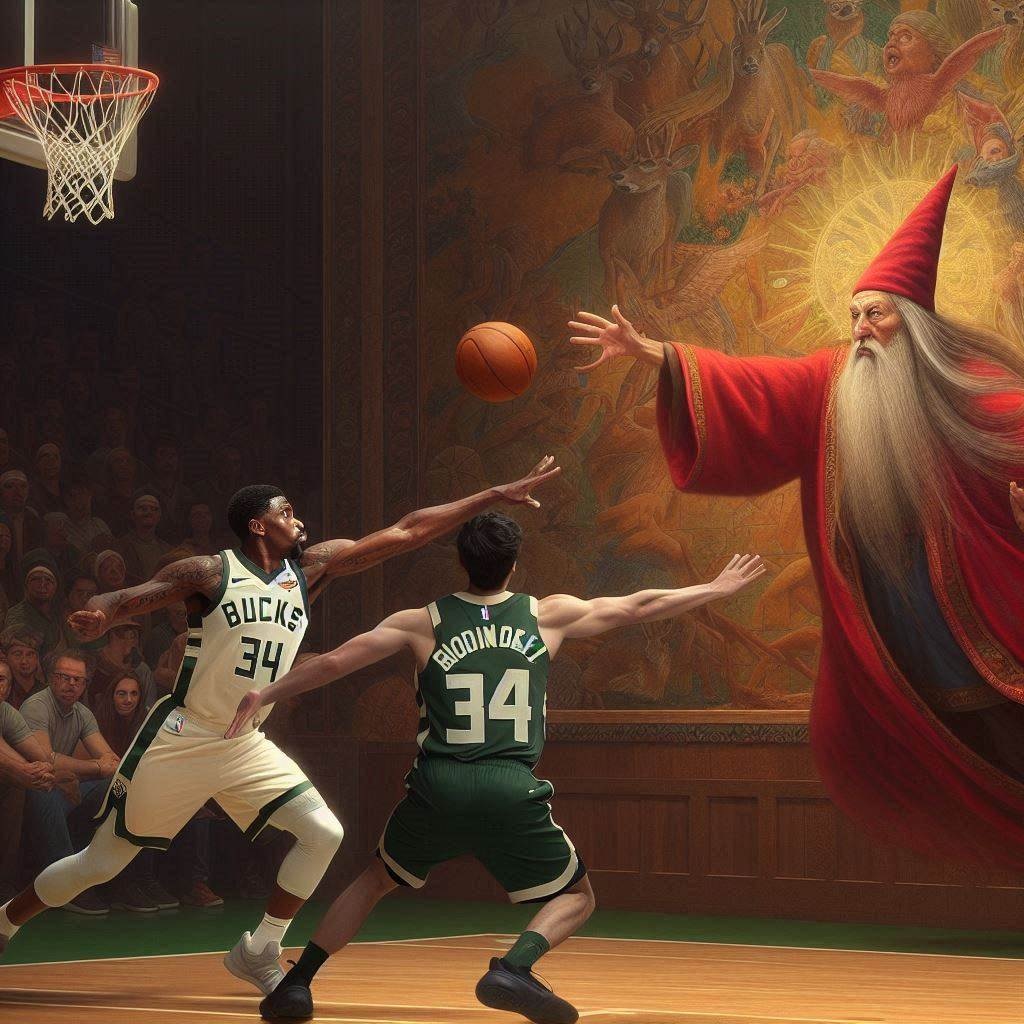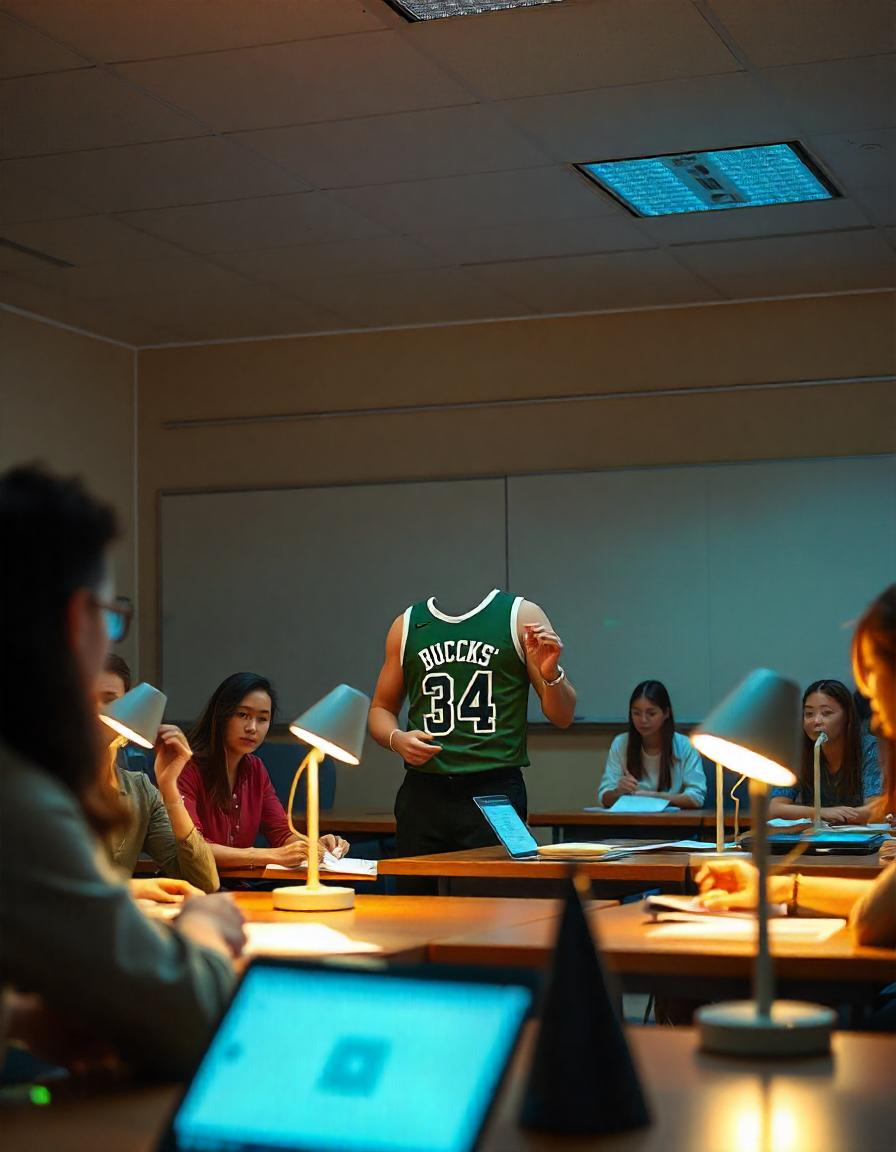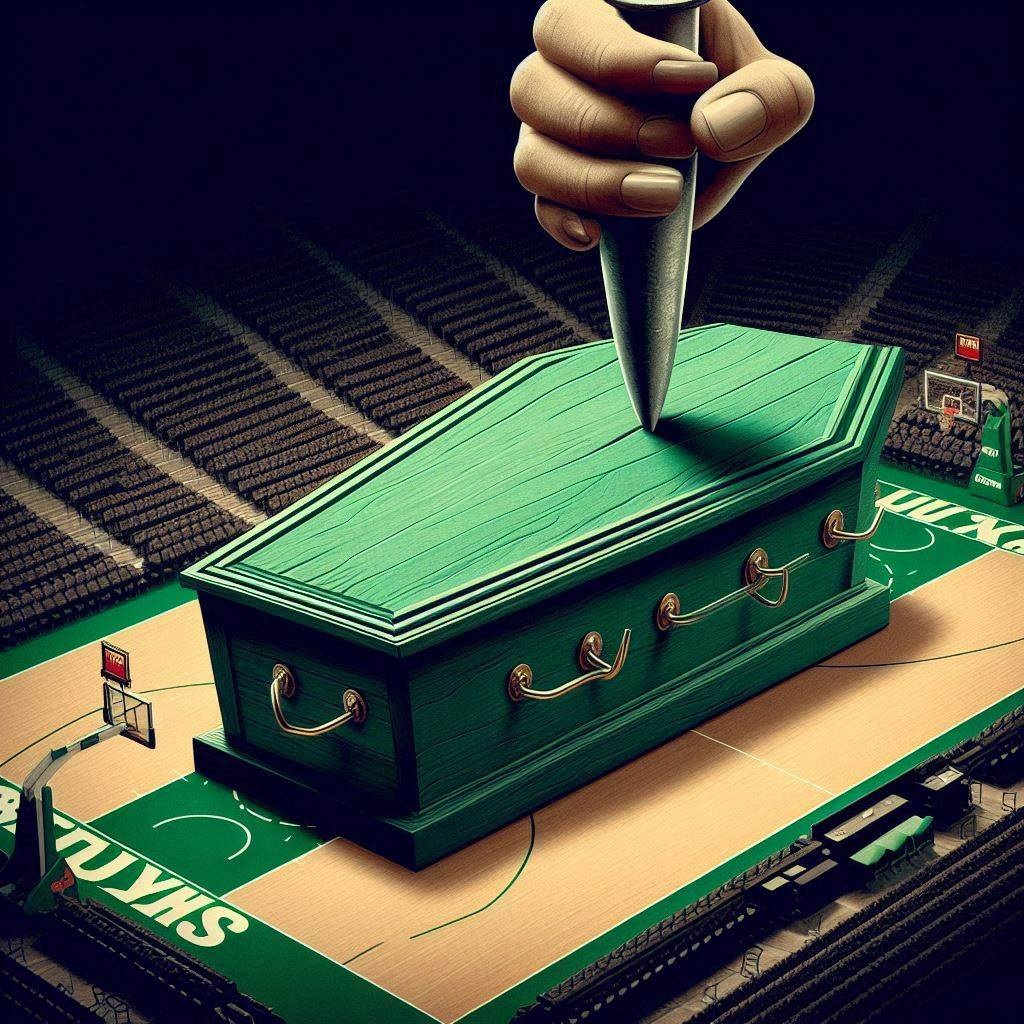Giannis Antetokounmpo is a polarizing figure in the NBA, admired for his work ethic and humility but also criticized for multiple reasons both on and off the court. Dislike often stems from a mixture of his playing style, incidents involving opponents, his public persona, and perceptions of his behavior.
On-Court Reasons for Dislike
1. Physical and Aggressive Playing Style
Many critics argue that Giannis’ dominance relies more on brute athleticism than skill, with players and fans perceiving his approach as “bulldozing,” lacking finesse, or being unrefined. This has led to accusations of being “boring” or taking the “easy route” by overpowering defenders rather than out-skilling them. Very often this is offensice fouls he all too often gets away with. It is also boring to watch as he has an extremely limited set of ways to score. Especially his dunks are very predictably the same ol same ol all the time.
2. Dirty or Reckless Plays
There have been notable incidents—like undercutting shooters, hard fouls, or physical altercations—that have led to accusations of recklessness or even dirty play. Though some former players defend him as not intentionally dirty, the reputation persists due to repeated aggressive incidents against opponents such as Jayson Tatum and driving plays that result in injuries. His physical dominance sometimes leads to others getting hurt, which is sometimes considered dangerous if not outright unsportsmanlike by fans and media.
3. Unsportsmanlike or Childish Antics
Opponents and commentators have called out Giannis for gestures like faking a handshake after a hard foul or reactively escalating situations in the heat of the game. Jaylen Brown, for example, labeled Giannis “a child” for such antics after receiving an elbow and being on the receiving end of a pulled-back handshake.
4. Clutch Performance and Playoff Disappointments
Despite his MVPs and championship, critics have pointed to specific playoff failures, perceived shortcomings in leadership, and offensive limitations (like shooting and free throws) as reasons to question his greatness and underachiever labels. When his teams falter, detractors highlight his inability to adapt or “raise his game,” fueling negative discussion.
Off-Court Reasons for Dislike
1. Incidents with Teammates and Staff
There have been viral incidents of Giannis slapping or berating teammates, such as the recent episode with Greek teammate Giannoulis Larentzakis during a team huddle. While some dismiss this as passionate leadership or even cultural banter, others see it as lacking respect or unnecessarily aggressive. We get it, he is annoyed that the league knows how to shut him down when it counts.
2. Locker Room Behavior and Internal Frustration
Reports and viral clips have surfaced of locker room outbursts, confrontational meetings, and visible frustration taken out on teammates, which can be interpreted as poor leadership or lack of composure under pressure.
3. Media Relationships and Perceived Arrogance
Episodes of walking out on reporters following tough losses or being selective about his communication have led to friction and media-driven narratives about him being inaccessible or having a chip on his shoulder. Worse still he often plays the “I was so poor” story when he has no real answer to basketball related questions.
4. Xenophobia and Outsider Status
A distinct stream of criticism from both fans and some players arises from his international roots. Some commentators and NBA insiders bluntly say part of the negativity is due to Giannis being a “foreigner,” lacking the typical “American swag,” or not coming up through U.S. basketball circuits—prompting feelings that he’s “not one of us”. This bias is echoed in NBA locker rooms and the media. Most importantly he seems totally hypocritical claiming he “feels Nigerian” the one minute, then “Greek at heart” the next and then “my home is in Milwaukee” just a second later.
5. Viral “Disrespect” Incidents
On and off the court, Giannis has had confrontations with other players’ families (e.g., a notable incident with Tyrese Haliburton’s father postgame) , or the ball game indicent and opposing staff (the “ladder incident” in Philadelphia) where his reactions have been called unprofessional or unduly emotional. And he is ultra hypocritical about his kids of course.
Summary Table: Main Reasons for Dislike
| Type | Examples & Incidents | Themes |
|---|---|---|
| On-Court | Aggressive/dirty plays, taunting, playoff failures | Style over skill, sportsmanship, immaturity |
| Off-Court | Locker room conflicts, disrespectful gestures, slaps | Poor leadership, disrespect, bad teammate |
| Media | Walkouts, introversion, handling tough questions | Arrogance, unapproachable, negative narratives |
| Cultural | Not American, foreign roots, outsider perspective | Xenophobia, lack of U.S. basketball pedigree |
Additional Notes
- Jealousy and Resentment: Some dislike may ultimately be rooted in jealousy, as Giannis’ physical gifts and meteoric rise are seen as “unfair” by former greats or less gifted players. It does seem like he has been over hyped and under delivered.
- Weirdness: He does not seem to want to fit in. He doesn’t train with other players, he makes weird Dad jokes, pretty infantile, he makes people uncomfortable very often with his approach.
- Pathetic mistakes. He leads the league in palming and other such infantile things. Even if he gets away with a lot, he still tops categories no pro should be in, let alone a supposed MVP candidate.
- Stat padding: It is hard not to see a lot of what he does as putting his personal stats above everything. And then blaming the rest of the roster.
- Ungrateful. The ultimate snub, after Khris, Jrue and Brook got him to the Finals he kept saying he “did it the right way” implying he was the only star on the team. But the stat padding is legit.
- Nepotism. Both Thanasis and now Alex have no place on an NBA bench. If an adult 30 year NBA player wants them as cheerleaders he should ask the Bucks to hire them as such, not take up a valuable team place.
- Excuses excuses. He has been in the league 13 years now and still falls back on the same excuses when he fails. Sad that his fans still think “if only he improves X Y Z this season” even now. And his “no failure in sports” speech was the most disrespectful ever.
- Sneaky manipulation of trades, whilst all along pretending he knows nothing. We now know for sure that he dictates terms pretty clearly. Coaches, players, trades are all signed off by him but then he plays the innocent ignoramus. And a question about how he gets all star votes lingers too.
- Annual trade mill that Giannis instigates and then acts like he knows nothing. No other super star wants to play with him of course. They know it’s all hype.
The above points encapsulate the primary criticisms and negative perceptions that have emerged around him.
- https://foxsportsradio.iheart.com/content/2022-09-01-the-real-reason-why-nba-players-constantly-hate-on-giannis-antetokounmpo/
- https://www.youtube.com/watch?v=BtleYOSFS1o
- https://thesportsrush.com/nba-news-i-dont-think-giannis-antetokounmpo-is-a-dirty-player-jeff-teague-reacts-to-jaylen-brown-altercation-with-bucks-star/
- https://www.youtube.com/watch?v=FBy4KE7IFbg
- https://www.reddit.com/r/nba/comments/11m2da2/regarding_the_discourse_around_giannis/
- https://www.youtube.com/watch?v=NIeGfpTE_Rc
- https://creators.spotify.com/pod/profile/hardfoul/episodes/Giannis-Antetokounmpo-is-Dirty-Player-e2s5lt5
- https://thesportsrush.com/nba-news-dirty-giannis-antetokounmpo-gets-called-out-for-his-behavior-against-jaylen-brown-by-lou-williams/
- https://www.reddit.com/r/nba/comments/12b5hbj/does_giannis_deserve_more_credit_for_the_success/
- https://www.profootballnetwork.com/nba/should-be-fined-giannis-antetokounmpo-sparks-outrage-after-aggressive-move-on-greek-national-teammate/
- https://www.youtube.com/watch?v=FpKCGUzZJk4
- https://www.essentiallysports.com/nba-active-basketball-news-frustrated-giannis-antetokounmpo-issues-strong-message-to-locker-room-as-cavs-loss-exposes-concerning-bucks-issues/
- https://www.youtube.com/watch?v=4B4kIVHbbsc
- https://www.youtube.com/watch?v=BliwOGTxAv8
- https://www.marca.com/en/basketball/nba/milwaukee-bucks/2024/11/10/6730ac0b46163fb1658b4582.html
- https://www.essentiallysports.com/nba-active-basketball-news-havent-washed-my-btt-locker-room-privacy-concerns-revived-by-giannis-antetokounmpo-in-frustrating-revelation-malika-andrews/
- https://thesportsrush.com/nba-news-giannis-doesnt-talk-to-the-media-giannis-antetokounmpo-opens-up-about-being-inaccessible-using-honeymoon-incident/
- https://www.jsonline.com/story/sports/2022/10/01/bucks-giannis-antetokounmpo-says-hes-not-losing-sleep-over-criticism/8155329001/
- https://www.reddit.com/r/MkeBucks/comments/xuedhm/giannis_antetokounmpo_says_hes_not_losing_sleep/
- https://www.si.com/nba/bucks/news/former-nba-player-defends-giannis-antetokounmpo-amidst-ladder-incident
- https://www.cnn.com/2025/04/30/sport/giannis-antetokounmpo-haliburton-bucks-pacers-game-5-spt
- https://timesofindia.indiatimes.com/sports/nba/top-stories/what-happened-between-giannis-antetokounmpo-and-tyrese-haliburtons-father-milwaukee-bucks-vs-indiana-pacers-courtside-confrontation-explained/articleshow/120748924.cms
- https://www.reddit.com/r/MkeBucks/comments/1h0f91j/why_is_giannis_the_only_target_of_media/
- https://www.youtube.com/watch?v=iwBHOi7hOhU
- https://timesofindia.indiatimes.com/sports/nba/top-stories/giannis-antetokounmpo-reportedly-disrespected-in-nba-rankings-despite-dominant-season/articleshow/123834040.cms
- https://www.yardbarker.com/nba/articles/milwaukee_bucks_former_giannis_antetokounmpo_teammate_accuses_media_of_creating_trade_narrative/s1_17009_42870084
- https://www.si.com/nba/bucks/off-the-court/giannis-antetokounmpo-shares-how-god-keeps-him-humble
- https://www.reddit.com/r/MkeBucks/comments/q1k2rw/why_do_people_hate_giannis/
- https://www.facebook.com/controversychronicles/videos/5-most-savage-off-court-moments-of-giannis-antetokounmpo-/465340055517837/
- https://www.facebook.com/groups/bostcelt/posts/2258073037940497/
- https://www.reddit.com/r/MkeBucks/comments/1at0e22/whats_up_with_the_general_nba_fansmedia_giannis/
- https://www.reddit.com/r/nba/comments/1kb5zv9/highlight_giannis_antetokounmpo_on_the/
- https://www.youtube.com/watch?v=2LSta5L2eNQ
- https://behindthebuckpass.com/lingering-giannis-antetokounmpo-controversy-answer
- https://basketnews.com/news-231790-giannis-opens-up-on-european-return-responds-to-viral-slap-controversy.html
- https://www.youtube.com/watch?v=ktrwC47E7pQ
- https://www.sportsbusinessjournal.com/SB-Blogs/SBJ-Unpacks/2024/01/16/
- https://www.youtube.com/watch?v=Ogt4sNEc_1M
- https://sports.yahoo.com/article/tyrese-haliburtons-dad-facing-backlash-055352805.html
- https://www.facebook.com/groups/1073883926129889/posts/2500927923425475/
- https://www.youtube.com/watch?v=rycBgps6e9Q
- https://www.youtube.com/watch?v=uZJy5sRxDAw
- https://www.reddit.com/r/nba/comments/1gn8ywr/giannis_to_someone_off_camera_in_the_bucks_locker/
- https://www.youtube.com/watch?v=aLpS1bVgDus
- https://lastwordonsports.com/basketball/2024/12/13/nba-media-bucks-giannis-antetokounmpo/
- https://www.youtube.com/watch?v=6NWCga5A1M8
- https://www.youtube.com/watch?v=DtsA7Gf8E7o
- https://www.facebook.com/SportsHighlightsChannel/posts/hot-according-to-a-highly-reliable-source-inside-the-bucks-locker-room-the-greek/543897208492593/
- https://www.tiktok.com/@bleacherreport/video/7435296701503638815
- https://www.npr.org/2023/05/01/1173137368/giannis-antetokounmpo-reporter-milwaukee-bucks-nba-playoffs
- https://basketnews.com/news-231529-giannis-antetokounmpo-issues-public-apology-after-controversial-live-comment.html
- https://sports.yahoo.com/nba/breaking-news/article/giannis-antetokounmpo-not-in-attendance-at-media-day-because-of-covid-but-addresses-talk-about-his-bucks-future-174154952.html
- https://sports.yahoo.com/article/giannis-antetokounmpos-bucks-teammate-reacts-054725834.html
- https://abcnews.go.com/Sports/giannis-antetokounmpo-loves-greek-freak-nickname-unsure-origin/story?id=70817070
- https://www.sportbible.com/nba/lebron-james-basketball-steph-curry-giannis-antetokounmpo-jefferson-397141-20251006
- https://www.reddit.com/r/nba/comments/aqfng8/giannis_im_not_trying_to_sound_arrogant_and_cocky/
- https://www.youtube.com/watch?v=KFTRJRcLHUc
- https://au.sports.yahoo.com/backlash-against-rousey-unwarranted-231922524.html
- https://www.youtube.com/watch?v=dPN2A6i6E_U
- https://www.express.co.uk/sport/othersport/1064899/Giannis-Antetokounmpo-Milwaukee-Bucks-Brooklyn-Nets-NBA-news
